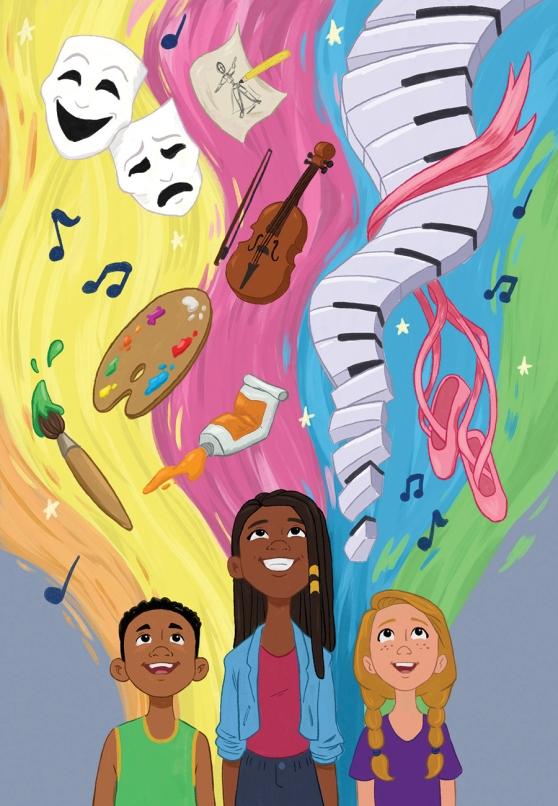Gateway to the world

When Elias Jacobs attended PS 84 in upper Manhattan in the 1970s, an art teacher introduced him to stop motion animation. He and a friend worked feverishly on a skit about slipping on a banana peel, which drew uproarious laughter from an auditorium full of classmates.
“It was such a simple thing, but I got this thrill from it,” remembers Jacobs, who now teaches art at Bronx Park MS. “I’m a lifelong artist, and I never wanted to do anything else.”
But in many schools, the robust arts programs that Jacobs remembers from his youth have vanished.
“There’s an attitude that art is a secondary priority,” Jacobs says. “Principals have a lot of pressure to get test scores up and nothing else matters. It’s a failure of the system.”
Arts programs may also be on the chopping block this fall as school principals look for ways to trim costs in the face of Mayor Adams’ school budget cuts.
When Jacobs began his teaching career in 2007, Mayor Michael Bloomberg was dividing large secondary schools into smaller ones, with the consequence that many smaller schools no longer had the budget to sustain multiple arts programs.
“The middle school I attended had a full band, a full orchestra, a chorus program, a visual arts studio and a dance program, all under one roof,” says Jacobs. “Now if a school has both art and music, it’s a unicorn.”
In fact, just 20% of New York City middle schools reported offering instruction in all four arts disciplines (art, music, dance and theater) in the 2020-21 school year. The city Department of Education’s annual Arts in Schools report indicates that the number offering all four is “notably lower than in previous years” — likely due to the disruption caused by the pandemic.
But for many educators, the pandemic has proven that arts instruction is more important than ever.
“During the pandemic, people turned to the arts — movies, literature, music — to be able to experience joy,” says Carla Cherry, an English teacher at Innovation Diploma Plus HS, a transfer high school in Manhattan.
Cherry, a 26-year veteran, says she’s always sought out ways to infuse arts into her curriculum, from designing lessons that encourage students to look at artwork to creating partnerships with teaching artists to bringing art and filmmaking into her classroom. With the help of the nonprofit Educational Video Center, her students produced short documentaries on social justice issues such as gun violence.
“We always talk about critical thinking, about having students become citizens of the world — this is where we can start,” Cherry says. “Art is one way to look at how to make a difference in the world.”
Bringing the arts into a classroom can also give students the opportunity to experience and express learning in a new way. Magala Bien-Aime, a special education teacher at MS 113 in Fort Greene, Brooklyn, recalls teaching a unit on fractions and word problems when a student asked if he could draw his response.
“In a classroom that allows this freedom of artistic expression, you have the freedom to explore in a risk-free environment,” she says.
But while many teachers make an effort to incorporate the arts in academic instruction, it’s important not to lose sight of the significance of studying arts for arts’ sake.
“Arts are part of the human experience, something that makes us special as a species,” says Adam Mastrocola, a music teacher at the East-West School of International Studies in Flushing, Queens. “It’s great to acknowledge that music is connected to math and literacy, but at the same time that’s not the main goal of music. Music learning really activates the mind in a way that’s important on its own.”
In Mastrocola’s classroom, music is its own language: Children hear and experience it, and then learn how to read and write it. They learn to appreciate the music of different cultures and also gain valuable lessons in skills like self-control (starting and stopping when playing an instrument), collaboration and confidence.
Both Mastrocola and Jacobs are also passionate about how arts education unlocks a world of possibilities for students.
“The opportunities available to people who are looking to have a career in music are growing by the day,” says Mastrocola. “It’s more than being a musician — there are producers and editors and composers and arrangers and technicians. There are so many ways music knowledge can be used in a career path.”
But arts education needs to be valued to be successful. A scarcity of supplies and lack of access to materials have been frustrating to Jacobs.
“There’s plenty of work out there for skills I was using professionally, like digital animation, but we need Photoshop, Adobe and hardware,” he says. “New York City is the creative brain of the world. It’s a terrible shame that we’ve sacrificed so much art in our schools.”